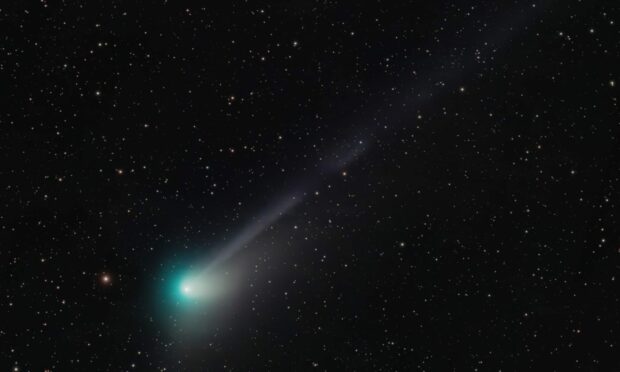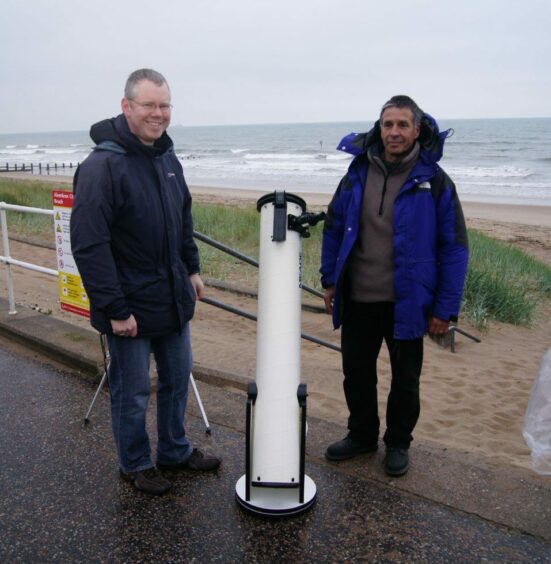A comet that has not been seen in 50,000 years will soon be flying across north and north-east skies.
Astronomy lovers are celebrating as Comet C/2022 E3 (ZTF), which is also known as the Green Comet, will be arriving for the first time since the Stone Age.
So far it has only been seen through a telescope, but soon even the naked eye will spot it as it draws nearer to Earth.
It won’t be visible again for another 50,000 years.
An Aberdeen astronomy expert says the best places to view the comet will be those with less light pollution – such as northern Scotland.
Comets are balls of primordial dust and ice that swing around the sun in giant elliptical orbits.
C/2022 E3 (ZTF) 2023 jan 25. 1.00 UT 1x110sec 11" RASA QHY600 and 1x240sec Leica-Apo-Telyt Nikon Z50mod Michael Jäger pic.twitter.com/j6HQzYPkSf
— Michael Jäger (@Komet123Jager) January 25, 2023
In March, astronomers using the wide-field survey camera at the Zwicky Transient Facility in California discovered it.
Since then the new comet has been sweeping across the northern constellation Corona Borealis in predawn skies.
But it is on a voyage through the inner Solar System and will be closest to Earth on February 1.
In January 2015, another comet with an ethereal green glow appeared over north-east skies.
The brightness of comets is notoriously unpredictable, but the green comet could become the first comet visible to the naked eye since NEOWISE in 2020.
Comet easy to spot with binoculars
This comet isn’t expected to be quite the spectacle that Comet NEOWISE was back in 2020. But NASA says it’s still an “awesome opportunity to make a personal connection with an icy visitor” from the distant outer solar system.
Nasa has said if the Green Comet continues its current trend in brightness, it’ll be easy to spot with binoculars.
Skip to 1.59 to learn more about the comet from NASA.
But to get the best chance of seeing it with your eyes, astronomers advise a dim location free of ambient light and giving your eyes 30 minutes to adjust to the conditions.
How can you see the comet?
Torcuill Torrance, 50, is a committee member of the Aberdeen Astronomical Society and has been tracking the comet for over a month with his team.
He gave the Press & Journal his top tips for catching a glimpse of the comet in Scotland.
“You need to be in a dark place to see it, and away from any cities or places with light pollution”, he said.
“Right now it is quite close to the North Star, otherwise known as Polaris.
“People will be able to use an app on their phone which will point them in the right direction, but failing that a pocket compass always does the job.
“If people look up at around 60 degrees it should be there in the sky.”
If you follow those steps there should be a “faint green glow”, but he warns children might have a better chance of seeing it with their younger eyes.
Mr Torrance believes coming out with a warm drink to watch “the building blocks of the solar system” is a great night out.
However, he recommends staying away from alcohol as it can affect night vision.



Conversation